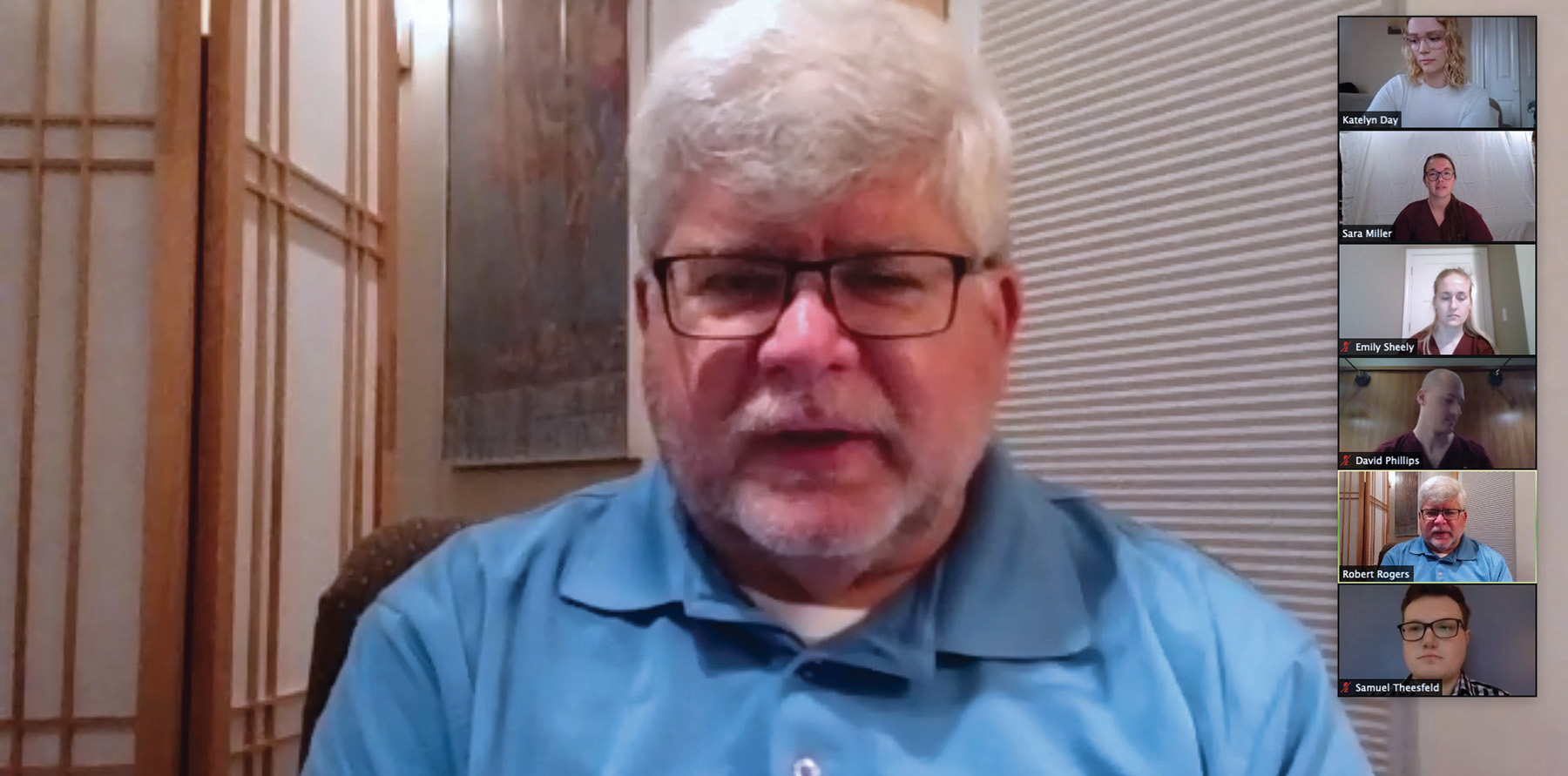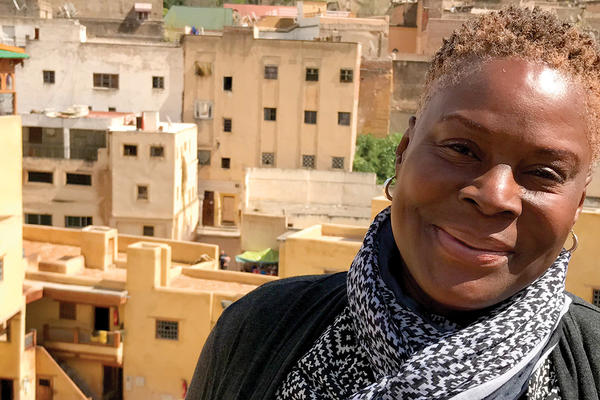Pandemic ushers in rise of telehealth
Virtual visits provide real-time learning
November 10, 2020

As Katelyn Day prepared for her visit with a diabetic patient with concerns about a foot ulcer, she reviewed his discharge papers from a recent hospital visit and best practices for wound care for non-healing foot ulcers.
She also checked her computer’s settings and Zoom configuration to ensure she could see and hear the patient.
Day is a student in the School of Nursing Master of Nursing program, and the patient in this situation is a standardized patient — an actor with a scripted medical, health and social story.
“I’ve been reading a lot about telehealth because of COVID-19, so it was really valuable to try it, given the current state of the world,” says Day. “It’s very relevant, and now that I’ve done it, I feel like it could be a viable option for many patients who can’t get to a clinic or hospital.”
When the University of Minnesota shifted to learning online due to the COVID-19 pandemic, the School of Nursing converted its courses to an online format, including simulation learning. Simulations are critical in the development of health care professionals, as they give students a chance to utilize their skills and knowledge in simulated practice settings, according to Cynthia Bradley, PhD, RN, CNE, CHSE, director of simulation in the School of Nursing.
Bradley, who presented on a National League for Nursing panel about fostering clinical reasoning in virtual environments, points to the landmark National Council of State Boards of Nursing Simulation Study that demonstrated that up to 50% of prelicensure clinical hours can be replaced with simulation with similar or better learning outcomes. “Because of the current pandemic, nursing programs have no alternate method for providing clinical experiences for students,” says Bradley. “The simulation research evidence shows that the post-simulation debriefing is where the most significant learning happens. We are ensuring that faculty engage students in a debriefing dialogue after their virtual encounter to help students make connections and understand their own thinking about the patient scenario.”
Teasing out a patient’s story over telehealth
Patient care was also in upheaval as COVID-19 spread throughout the world, and with it, the clinical experiences that are a cornerstone to nursing education were disrupted. Quickly, patient care and clinical education moved to a telehealth environment, according to M Health Nurse Practitioner Clinics Director Jane Anderson, DNP, APRN, FNP-C, ANP-C, who is also a preceptor for family nurse practitioner students.
“We recreated health care in the middle of a health care crisis,” says Anderson. “As a provider, I realized that telehealth allows us to use our best listening skills, ask more questions to tease out the patient’s story and really partner with them.” Initially, 100% of patient visits at the Nurse Practitioner Clinic in downtown Minneapolis were virtual, and by late summer they still accounted for 50% of the visits at the clinic.
While the patients she sees have universally expressed appreciation for the virtual visits, they’ve also provided important clinical experience for students. “My students have really learned how to talk with patients and how to elicit what is needed to care for a patient. They are discovering how to diagnose a patient by telehealth, how to diagnose a patient by what they say,” says Anderson. “You have to use your critical thinking skills and listen in a different way.”

